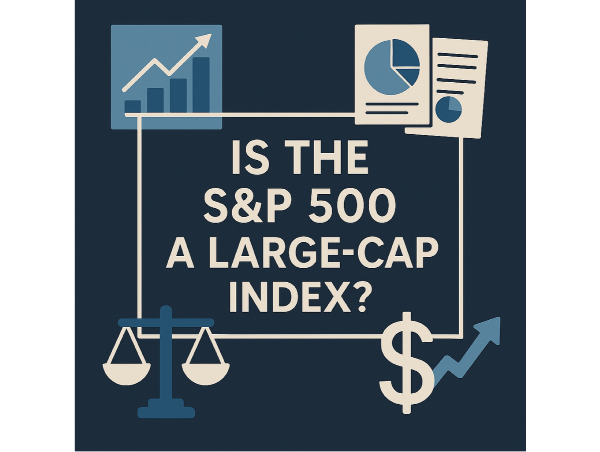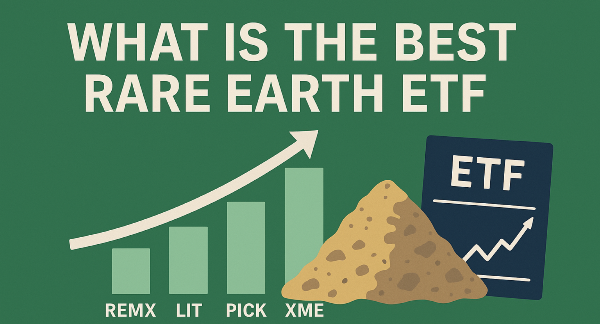Introduction
The S&P 500 is one of the most widely recognized stock market indexes, tracking the performance of 500 leading publicly traded companies in the United States. Investors often view it as a benchmark for large-cap stocks, given its focus on well-established firms with significant market capitalizations. However, the index includes companies of varying sizes, making it essential to understand its composition and classification. Examining the structure of the S&P 500 helps investors make informed decisions and assess whether it provides true large-cap exposure.
Defining Large-Cap Stocks
Large-cap stocks are shares of companies with market capitalizations exceeding ten billion dollars. Market capitalization is calculated by multiplying a company's stock price by its total outstanding shares, providing a measure of its overall market value. Large-cap stocks are typically issued by well-established firms with strong financials, making them attractive to investors seeking stability and lower volatility compared to mid- and small-cap stocks.
They generally have extensive resources, global reach, and well-defined business models that contribute to their resilience in fluctuating markets. Many large-cap stocks also pay dividends, providing investors with a steady income stream in addition to potential capital appreciation. Large-cap stocks are frequently included in major indexes such as the S&P 500, which serves as a key indicator of overall market health.
Composition of the S&P 500
The S&P 500 is composed of 500 leading publicly traded companies in the United States, selected based on specific criteria. To be included, a company must meet market capitalization requirements, typically exceeding $14.5 billion. Additionally, firms must demonstrate financial stability, positive earnings over recent quarters, and sufficient liquidity to ensure efficient trading. The index aims to represent the broader U.S. economy, balancing sector diversity while maintaining a focus on large-cap stocks. Despite its reputation as a large-cap index, the S&P 500 includes companies with varying market capitalizations.
While the majority of its constituents are large-cap stocks, some mid-cap companies qualify for inclusion due to market fluctuations and growth trajectories. The presence of mid-cap stocks within the S&P 500 influences its risk profile and return potential. While large-cap stocks provide stability, mid-cap companies introduce elements of growth and volatility. Investors tracking the index should be aware of this composition, as it affects portfolio diversification and investment strategies.
Mid-Cap Stocks in the S&P 500
Some mid-cap stocks qualify for inclusion in the S&P 500 due to their financial performance and market capitalization growth. While the index primarily consists of large-cap companies, certain mid-cap firms meet the eligibility criteria, including profitability, liquidity, and industry representation. As these companies expand, they may transition into full large-cap status, making their presence in the index a reflection of evolving market dynamics. Market fluctuations influence stock classifications over time, affecting whether a company is considered mid-cap or large-cap.
Economic conditions, earnings growth, and investor sentiment can drive changes in market capitalization, leading to periodic rebalancing within the S&P 500. Several companies within the S&P 500 are considered mid-cap despite being part of the index. These firms typically have market capitalizations near the lower threshold for large-cap classification, positioning them in a transitional phase.
Sector Weighting and Market Capitalization Distribution
The sector composition of the S&P 500 reflects the overall structure of the U.S. economy, with industries such as technology, healthcare, and financials holding significant weight. Technology stocks, in particular, have grown to represent a substantial portion of the index, driven by the dominance of companies like Apple, Microsoft, and Nvidia. Healthcare and financial sectors also contribute heavily, providing stability and diversification. The index's sector allocations shift over time based on market trends, corporate earnings, and investor sentiment, influencing overall performance.
Market capitalization weighting plays a crucial role in determining stock representation within the S&P 500. The index follows a float-adjusted market capitalization methodology, meaning companies with higher valuations exert greater influence on index movements. Mega-cap stocks often dictate index trends.
Comparison to Other Large-Cap Indexes
The S&P 500, Dow Jones Industrial Average, and Russell 1000 are three widely followed large-cap indexes, each with distinct methodologies and compositions. The S&P 500 tracks 500 of the largest publicly traded companies, offering broad sector diversification and market representation. The Dow Jones Industrial Average consists of 30 blue-chip stocks, selected based on industry leadership rather than strict market capitalization criteria.
The Russell 1000 includes the largest 1,000 companies, providing a more extensive view of the large-cap segment and capturing firms that may not be included in the S&P 500 or Dow Jones Industrial Average. Different indexes define large-cap stocks using varying selection criteria. These differences influence index composition and investor strategies. Investors seeking pure large-cap exposure may consider alternative indexes or ETFs that specifically target mega-cap stocks to ensure alignment with their investment objectives.
Impact on Investment Strategies
Investors utilize the S&P 500 to gain exposure to large-cap stocks, leveraging its broad market representation and historical performance. The index serves as a benchmark for portfolio construction, allowing individuals and institutions to track the performance of leading U.S. companies. Many investors allocate a portion of their portfolios to S&P 500-based funds to ensure stability and long-term growth. Portfolio allocation considerations depend on the weighting methodology of the S&P 500.
Since the index is market-cap weighted, larger companies exert a greater influence on overall performance. Investors must assess sector concentrations and stock weightings to ensure balanced exposure across industries. S&P 500 ETFs play a crucial role in large-cap and mid-cap investment strategies, offering liquidity and cost efficiency. Understanding the nuances of different S&P 500 ETFs helps investors align their portfolios with their financial objectives.
Risks and Misconceptions
Many investors assume that the S&P 500 consists exclusively of large-cap stocks, but this is a common misconception. While the index primarily tracks well-established companies, it also includes mid-cap stocks that meet its selection criteria. Market fluctuations and company growth can shift stock classifications over time, leading to a mix of large- and mid-cap firms within the index.
Assuming uniform large-cap exposure when investing in the S&P 500 can introduce risks related to market concentration. Investors who rely solely on the S&P 500 for diversification may find their portfolios disproportionately affected by sector-specific downturns or economic shifts. To ensure true large-cap portfolio diversification, investors can complement S&P 500 holdings with other indexes or funds.
Conclusion
The S&P 500 is widely regarded as a large-cap index, but its composition includes mid-cap stocks that influence its overall market exposure. While the index primarily tracks established companies with significant market capitalizations, investors must recognize the presence of mid-cap constituents and their impact on portfolio performance. Understanding sector weightings, market capitalization distribution, and comparisons to other large-cap indexes helps investors assess whether the S&P 500 aligns with their financial objectives. By incorporating diversified funds and complementary investment strategies, individuals can optimize their portfolios while ensuring true large-cap exposure.




























Introduction
The S&P 500 is one of the most widely recognized stock market indexes, tracking the performance of 500 leading publicly traded companies in the United States. Investors often view it as a benchmark for large-cap stocks, given its focus on well-established firms with significant market capitalizations. However, the index includes companies of varying sizes, making it essential to understand its composition and classification. Examining the structure of the S&P 500 helps investors make informed decisions and assess whether it provides true large-cap exposure.
Defining Large-Cap Stocks
Large-cap stocks are shares of companies with market capitalizations exceeding ten billion dollars. Market capitalization is calculated by multiplying a company's stock price by its total outstanding shares, providing a measure of its overall market value. Large-cap stocks are typically issued by well-established firms with strong financials, making them attractive to investors seeking stability and lower volatility compared to mid- and small-cap stocks.
They generally have extensive resources, global reach, and well-defined business models that contribute to their resilience in fluctuating markets. Many large-cap stocks also pay dividends, providing investors with a steady income stream in addition to potential capital appreciation. Large-cap stocks are frequently included in major indexes such as the S&P 500, which serves as a key indicator of overall market health.
Composition of the S&P 500
The S&P 500 is composed of 500 leading publicly traded companies in the United States, selected based on specific criteria. To be included, a company must meet market capitalization requirements, typically exceeding $14.5 billion. Additionally, firms must demonstrate financial stability, positive earnings over recent quarters, and sufficient liquidity to ensure efficient trading. The index aims to represent the broader U.S. economy, balancing sector diversity while maintaining a focus on large-cap stocks. Despite its reputation as a large-cap index, the S&P 500 includes companies with varying market capitalizations.
While the majority of its constituents are large-cap stocks, some mid-cap companies qualify for inclusion due to market fluctuations and growth trajectories. The presence of mid-cap stocks within the S&P 500 influences its risk profile and return potential. While large-cap stocks provide stability, mid-cap companies introduce elements of growth and volatility. Investors tracking the index should be aware of this composition, as it affects portfolio diversification and investment strategies.
Mid-Cap Stocks in the S&P 500
Some mid-cap stocks qualify for inclusion in the S&P 500 due to their financial performance and market capitalization growth. While the index primarily consists of large-cap companies, certain mid-cap firms meet the eligibility criteria, including profitability, liquidity, and industry representation. As these companies expand, they may transition into full large-cap status, making their presence in the index a reflection of evolving market dynamics. Market fluctuations influence stock classifications over time, affecting whether a company is considered mid-cap or large-cap.
Economic conditions, earnings growth, and investor sentiment can drive changes in market capitalization, leading to periodic rebalancing within the S&P 500. Several companies within the S&P 500 are considered mid-cap despite being part of the index. These firms typically have market capitalizations near the lower threshold for large-cap classification, positioning them in a transitional phase.
Sector Weighting and Market Capitalization Distribution
The sector composition of the S&P 500 reflects the overall structure of the U.S. economy, with industries such as technology, healthcare, and financials holding significant weight. Technology stocks, in particular, have grown to represent a substantial portion of the index, driven by the dominance of companies like Apple, Microsoft, and Nvidia. Healthcare and financial sectors also contribute heavily, providing stability and diversification. The index's sector allocations shift over time based on market trends, corporate earnings, and investor sentiment, influencing overall performance.
Market capitalization weighting plays a crucial role in determining stock representation within the S&P 500. The index follows a float-adjusted market capitalization methodology, meaning companies with higher valuations exert greater influence on index movements. Mega-cap stocks often dictate index trends.
Comparison to Other Large-Cap Indexes
The S&P 500, Dow Jones Industrial Average, and Russell 1000 are three widely followed large-cap indexes, each with distinct methodologies and compositions. The S&P 500 tracks 500 of the largest publicly traded companies, offering broad sector diversification and market representation. The Dow Jones Industrial Average consists of 30 blue-chip stocks, selected based on industry leadership rather than strict market capitalization criteria.
The Russell 1000 includes the largest 1,000 companies, providing a more extensive view of the large-cap segment and capturing firms that may not be included in the S&P 500 or Dow Jones Industrial Average. Different indexes define large-cap stocks using varying selection criteria. These differences influence index composition and investor strategies. Investors seeking pure large-cap exposure may consider alternative indexes or ETFs that specifically target mega-cap stocks to ensure alignment with their investment objectives.
Impact on Investment Strategies
Investors utilize the S&P 500 to gain exposure to large-cap stocks, leveraging its broad market representation and historical performance. The index serves as a benchmark for portfolio construction, allowing individuals and institutions to track the performance of leading U.S. companies. Many investors allocate a portion of their portfolios to S&P 500-based funds to ensure stability and long-term growth. Portfolio allocation considerations depend on the weighting methodology of the S&P 500.
Since the index is market-cap weighted, larger companies exert a greater influence on overall performance. Investors must assess sector concentrations and stock weightings to ensure balanced exposure across industries. S&P 500 ETFs play a crucial role in large-cap and mid-cap investment strategies, offering liquidity and cost efficiency. Understanding the nuances of different S&P 500 ETFs helps investors align their portfolios with their financial objectives.
Risks and Misconceptions
Many investors assume that the S&P 500 consists exclusively of large-cap stocks, but this is a common misconception. While the index primarily tracks well-established companies, it also includes mid-cap stocks that meet its selection criteria. Market fluctuations and company growth can shift stock classifications over time, leading to a mix of large- and mid-cap firms within the index.
Assuming uniform large-cap exposure when investing in the S&P 500 can introduce risks related to market concentration. Investors who rely solely on the S&P 500 for diversification may find their portfolios disproportionately affected by sector-specific downturns or economic shifts. To ensure true large-cap portfolio diversification, investors can complement S&P 500 holdings with other indexes or funds.
Conclusion
The S&P 500 is widely regarded as a large-cap index, but its composition includes mid-cap stocks that influence its overall market exposure. While the index primarily tracks established companies with significant market capitalizations, investors must recognize the presence of mid-cap constituents and their impact on portfolio performance. Understanding sector weightings, market capitalization distribution, and comparisons to other large-cap indexes helps investors assess whether the S&P 500 aligns with their financial objectives. By incorporating diversified funds and complementary investment strategies, individuals can optimize their portfolios while ensuring true large-cap exposure.